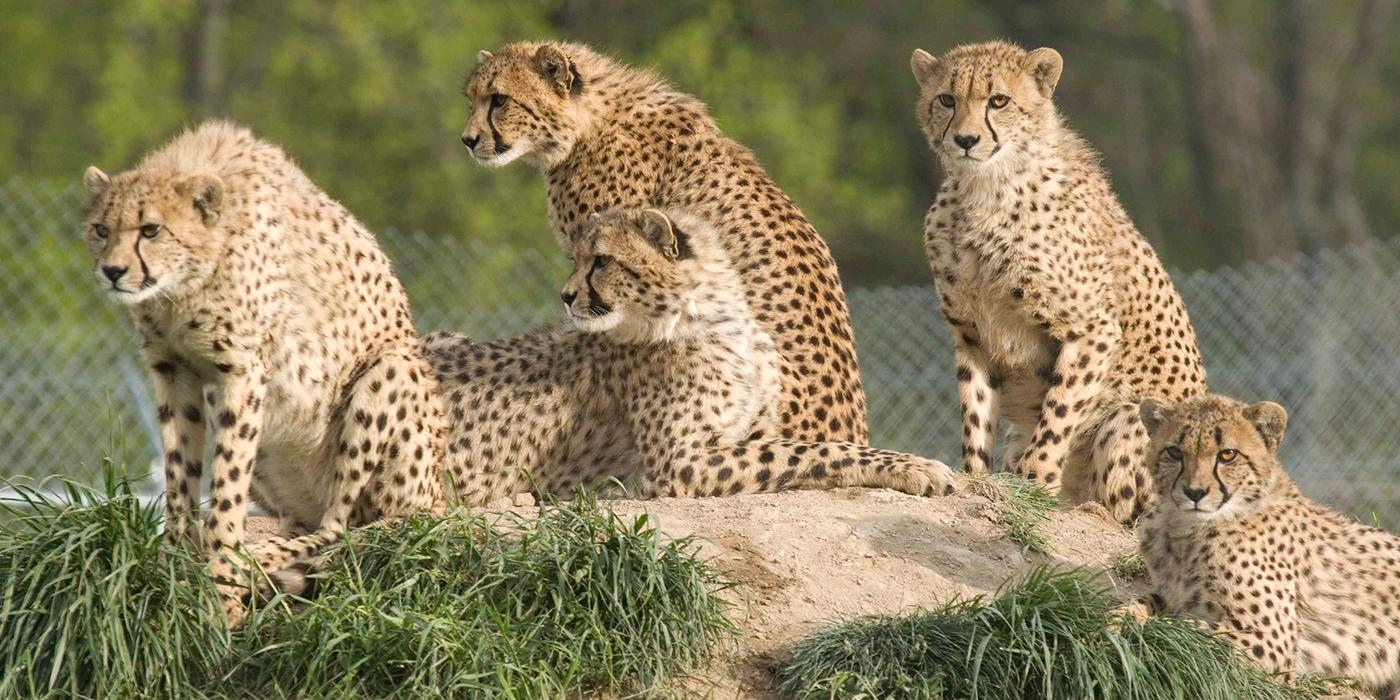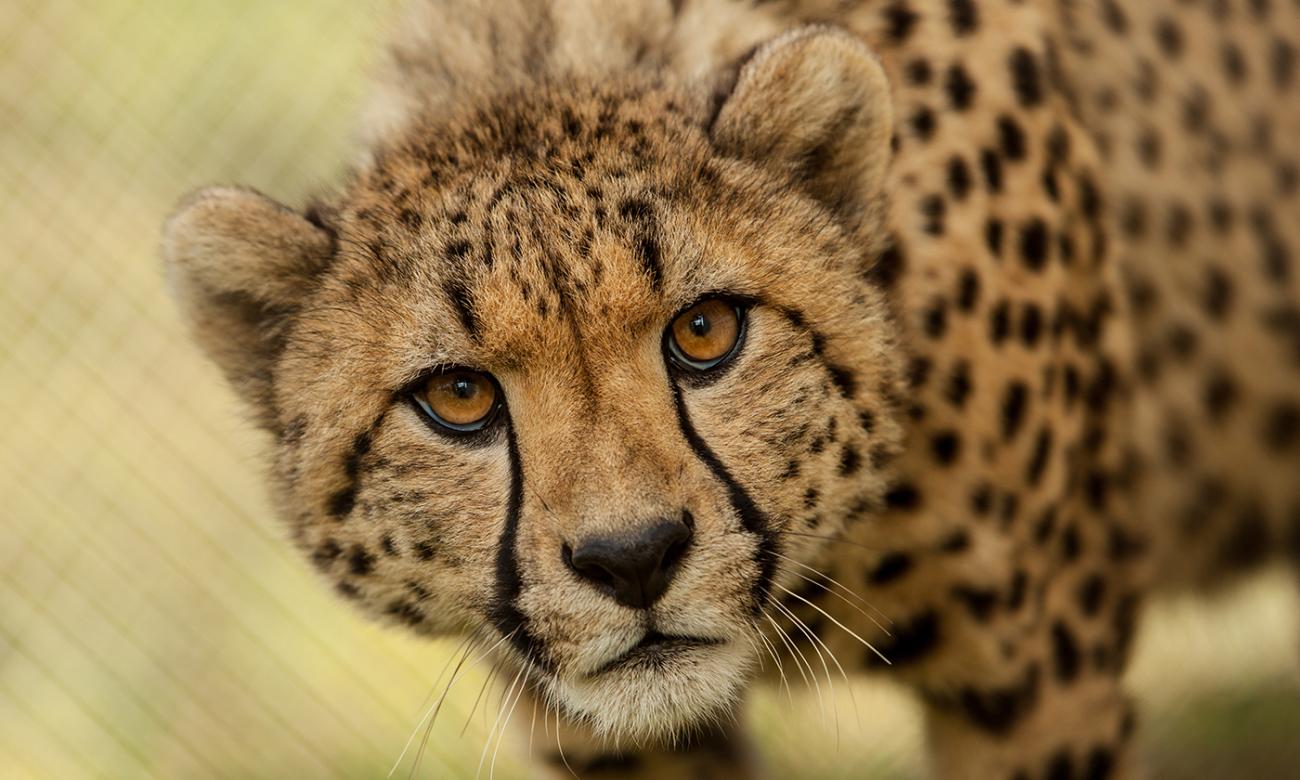Does Group Management of Male Cheetahs Influence Reproductive Fitness?
Scientists at the Smithsonian Conservation Biology Institute's Center for Species Survival (CSS) are working to save cheetahs by studying how ex situ conditions impact reproduction.
Recently, CSS scientists discovered that exposing cheetahs to traditional public exhibits as well as to more than three caregivers reduces sperm output (the total numbers of motile spermatozoa per ejaculate) and overall behavioral activity compared with males housed in spacious breeding centers away from people. There are no data in wild felids on the influence of number of males on reproductive physiology or hormone metrics of cohort members. Researchers considered the possibility that how male cheetahs were grouped (or not) under ex situ conditions could influence ejaculate quality or testosterone and glucocorticoid (stress hormone) profiles.
Free-ranging cheetahs have a social structure that is mostly different from other felid species. Wild females are solitary, and are with other cheetahs only during brief periods of mating or when caring for offspring. By contrast, males can live as singletons, but often range in permanent, closely bonded groups called coalitions. Coalitions are usually made up of two to three animals, but can have as many as five. How these cheetahs exist and survive in nature provides clues on how the species should be managed to thrive in ex situ (captive) collections.
Historically, cheetahs managed in traditional urban zoos experience poor reproductive success. While most adult female cheetahs are maintained singly (as they would live in the wild), only about 25 percent of these have ever reproduced. The proportion of successfully reproducing adult males is even lower at about 18 percent. Currently, about 85 percent of zoo-held, male cheetahs are managed in small coalitions, an appealing strategy because it mimics wild social structure, and animal groups create more interesting, exciting exhibits for the public.
This project explored the relationships between a singleton versus coalition management structure on ejaculate quality and gonadal–adrenal hormone concentrations and profiles. Within a given cheetah group, researchers also looked for evidence of social hierarchy using behavioral interactions followed by comparing behavioral rank to reproductive metrics. Results may provide practical insights on the influence of group management and behavioral assessments to improve conservation breeding effectiveness for this rare and difficult-to-reproduce species.
The findings from this study provided further evidence that living conditions imposed on cheetahs ex situ can profoundly influence seminal quality. Specifically, CSS researchers made several discoveries, the first that there were sperm output advantages for managing cheetahs in a coalition structure. The highest numbers of motile spermatozoa were produced by coalition males rather than singletons, and multiple males from within the same group produced superior ejaculates. Second, there was some evidence of a relationship between the higher sperm quality values for coalitions and simultaneously elevated group testosterone concentrations. Further, it was clear that the differences between singletons and coalitions were not being regulated by the adrenal hormones grouped under glucocorticoids. Although there were sperm output advantages for male cheetahs to live in a coalition while under intensive, ex situ management, the greater numbers of motile spermatozoa were not necessarily being driven by differences in gonadal androgen or adrenal glucocorticoid production or to the behaviors measured.
Collaborators and Partners
Conservation Centers for Species Survival (C2S2)
Dickerson Park Zoo
The Philadelphia Zoo
San Diego Safari Park
White Oak Conservation
Wildlife Safari
The Wilds
The William H. Donner Foundation Inc.
George Mason University













